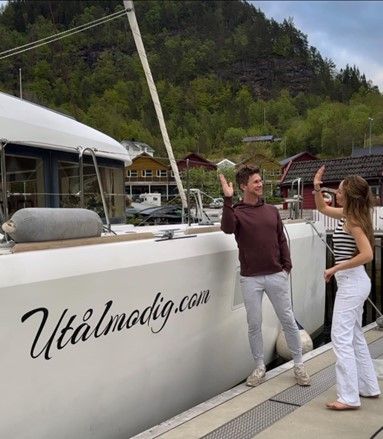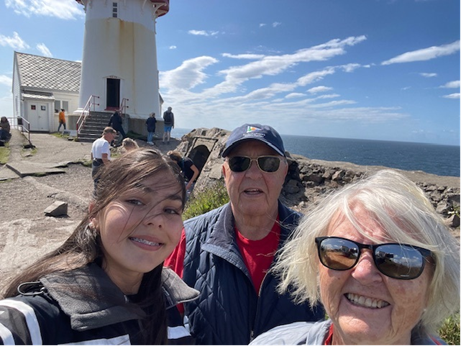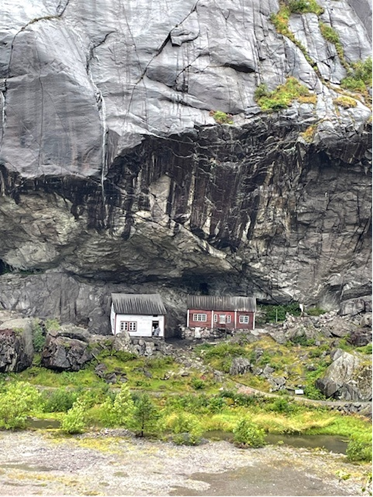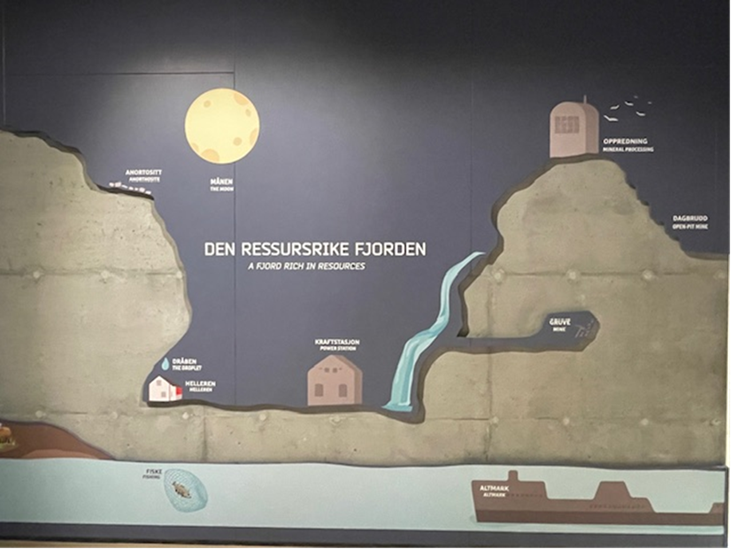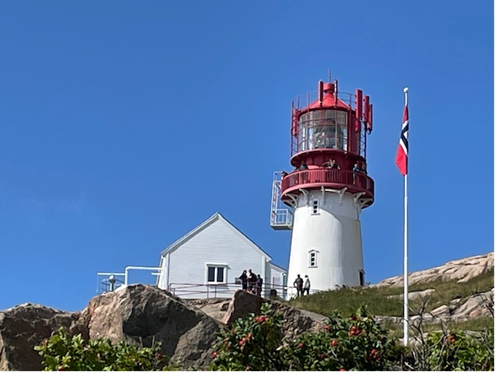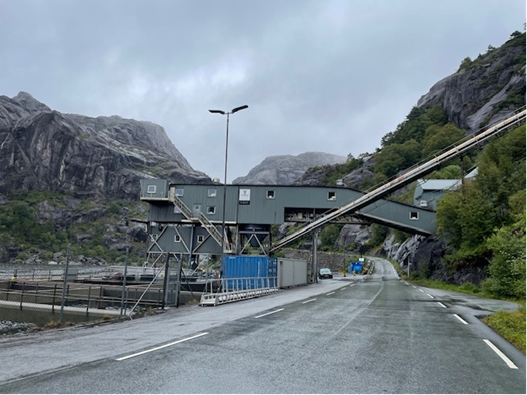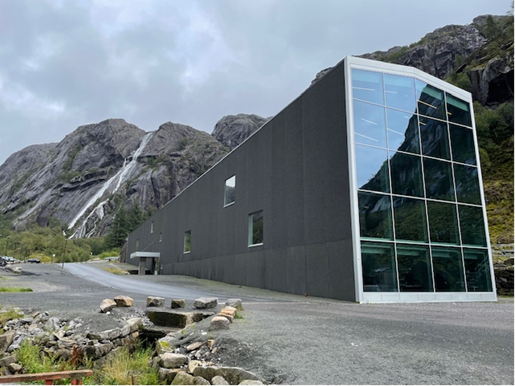Blog Layout
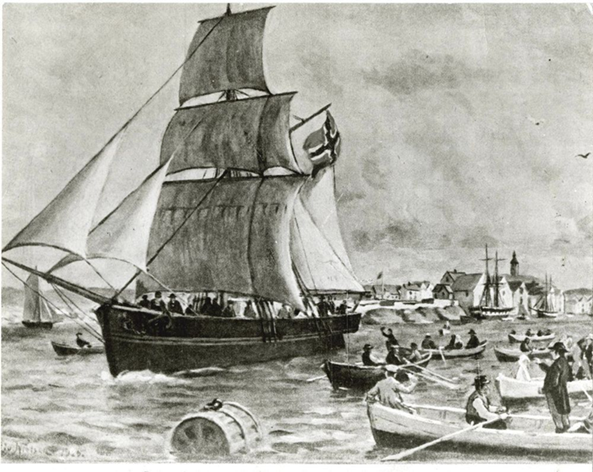
By Lasse Syversen
•
February 1, 2025
On the wall in our summerhouse, I have a model of one of my favorite ships, Restauration, a sloop built in 1801 in Hardanger, Norway. Restauration set sail from Stavanger on July 4, 1825, with 52 people aboard, a small religious group who were followers of lay preacher Hans Nielsen Hauge. Known as the Haugeans (“Haugianere”), the group was searching for religious freedom and better economic opportunities. The Restauration holds a special place in Norwegian American history, and this year we celebrate the 200-year anniversary of that first emigration from Norway to the United States of America.
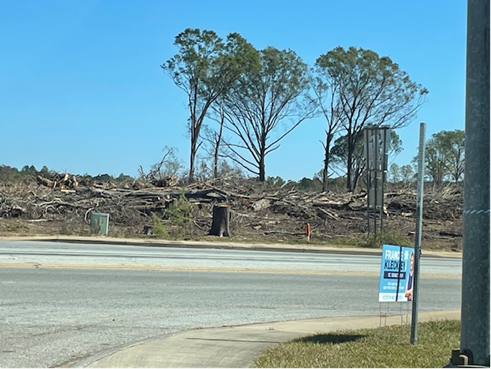
By Lasse Syversen
•
November 1, 2024
Even before the most recent hurricane (Milton) hit Florida, Vigdis and I were planning a long drive visiting six states and both the East Coast and Gulf Coast of Florida. The purpose of this trip was to experience with our own eyes how the recent storms have impacted individual locations and, for me in particular, the effects on the transportation industry. As a Norwegian, we have little experience with hurricanes, and I believe we don’t get the full picture through the news as we will discuss further in this article. That’s why we wanted to do this trip before we returned to Norway for Thanksgiving. We expect many questions from family and friends about the election and all the storms, so we wanted to be better prepared. What’s better than talking to local people and seeing it with your own eyes? Relative to the election, this trip was also to experience the so-called “divided country.” We did not find a divided country, but we did find a lot of love, unity and hope, my theme for this year.
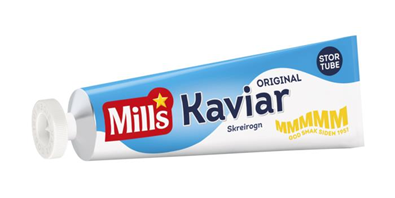
By Lasse Syversen
•
October 1, 2024
One way we know that Fall is coming in Norway is when our dear HM The King goes onboard the Royal Yacht, Kongeskipet MS NORGE, for the last time to inspect the crew and honor them for their service. Called the debarking, it marks the end of the season for this beautiful ship. This year, as in so many before, he was accompanied by HM The Queen and The Crown Prince. The ship was used this year for royal visits to local communities, like their visit to Agder and Rogaland. On June 1st, Crown Prince Haakon and Crown Princess Mette-Marit used the yacht to attend an anniversary celebration at Moster in Vestland marking the 1000-year-jubilee of the first Christian Laws of Norway introduced by King Olaf Haraldsson and Bishop Grimkjell at Mostratinget (a court meeting) in 1024.
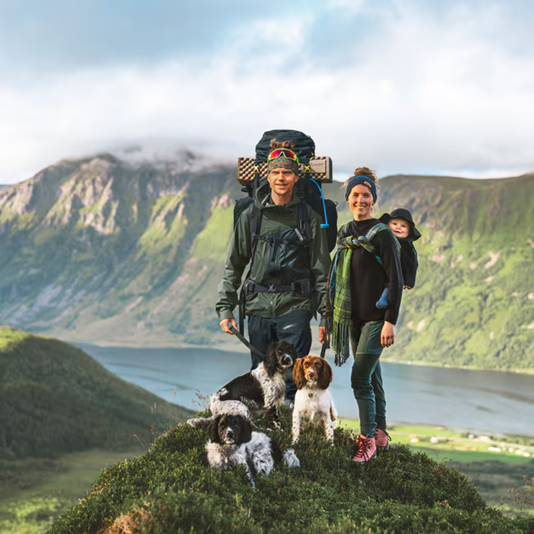
By Lasse Syversen
•
July 1, 2024
Traveling to Norway for the summer in mid-June always connects us with Americans traveling to Norway, at the airport and on board the plane. I use the opportunity to ask where they are going, why they selected Scandinavia and their possible previous experiences. Scandinavian Airlines and Iceland Air benefit from land vacationers and cruise passengers during the summer which compensates for the lack of business travelers not traveling as much as other times of the year.
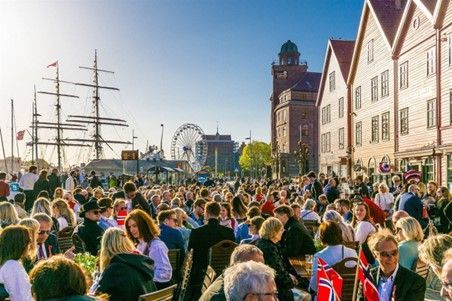
By Lasse Syversen
•
May 1, 2024
I certainly hope to see many of you this year at Carderock Park on May 12th to celebrate the Norwegian Constitution Day. Why do we celebrate May 17th? Norway's Constitution was unanimously adopted by the National Assembly at Eidsvoll on May 16, 1814, and was signed the following day, May 17, 1814. The actual celebration of Constitution Day began in 1836 when the day was instituted as a public holiday. People are dressed up in their absolute best clothes and, if you are lucky enough to have a bunad -- the Norwegian National costume -- May 17th is the day to wear it. The 17th of May is often called Children's Day, as opposed to many other countries celebrating their constitution day with military parades. The first children’s parade was arranged in Oslo in 1870, after an initiative by the famous poet and Nobel Prize winner, Bjørnstjerne Bjørnson. The first parade was for boys only; girls participated starting in 1889. School children and school bands go together in the parade, where the children wave Norwegian flags and shout hurray or sing along when the band plays. Everyone else stands along the parade route and watches and waves to the children. It is a full day celebration, from early morning to late evening.
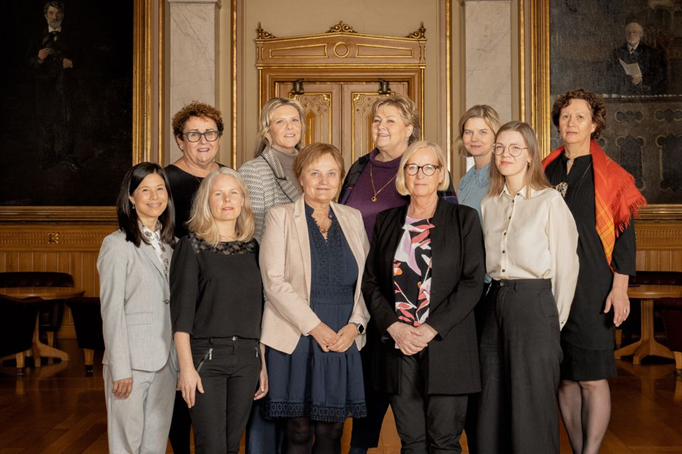
By Lasse Syversen
•
April 1, 2024
Just before Christmas, I was diagnosed with cancer. When you receive a diagnosis of a serious health issue, your priorities change. Having time to think over Christmas and going into the new year, I decided to make Hope my theme for the new year -- hope for my personal life, hope for our community, and hope in the world. Without hope in my life, I would probably not be writing to you today. In this life, there is no escaping heartache. Sorrow is a natural emotion, and the tears that go with sorrow can be healthy. Hope allows us to feel the pain and then work toward healing. It keeps us from staying stuck in sorrow or the pit of despair which is neither healthy nor natural. Sharing with you what I am concerned about gives me hope. If you share your concerns with your friends, it can give you hope as well.

By Lasse Syversen
•
March 1, 2024
My father always said, “when someone loses, someone else wins.” I think this is certainly true when we talk about the conflict in the Red Sea and the Suez Canal where Houthi rebels began firing on U.S. military and commercial vessels after a deadly blast at the Al-Ahli hospital in Gaza on October 17th, a few days after the outbreak of the Israel-Hamas war. The Houthis, who support Palestinians under attack by Israel in Gaza, claim they only target vessels heading for or with ties to Israel, but others have been hit as well.
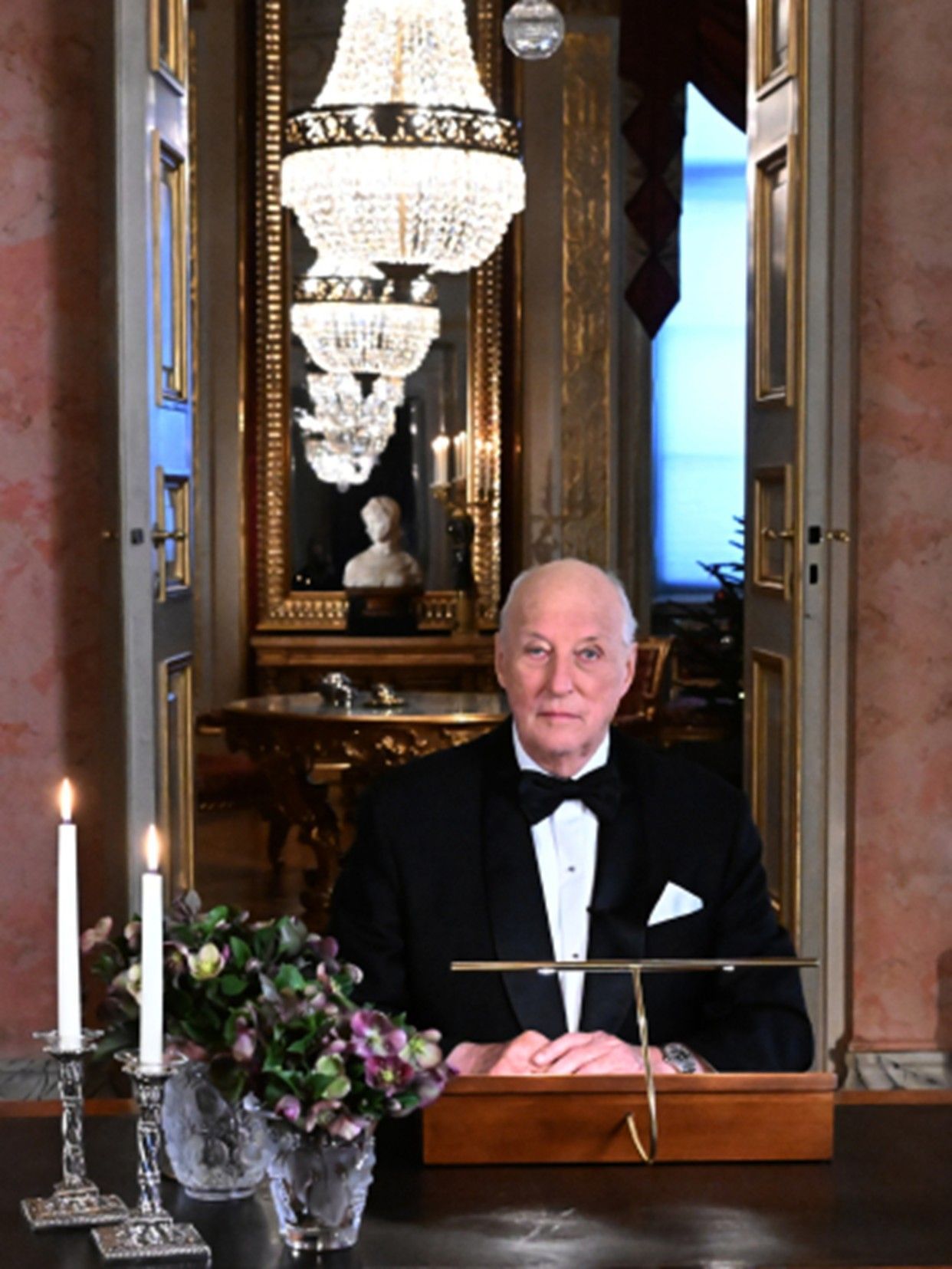
By Lasse Syversen
•
February 1, 2024
The Nobel Peace Prize was awarded this year to Narges Mohammadi, a 51 year old Iranian journalist and human rights activist known for her work as deputy director of the Defenders of Human Rights Center, an organization that advocates for political prisoners. The Chairman of the Norwegian Nobel Committee presented the medal in the presence of King Harald V of Norway.
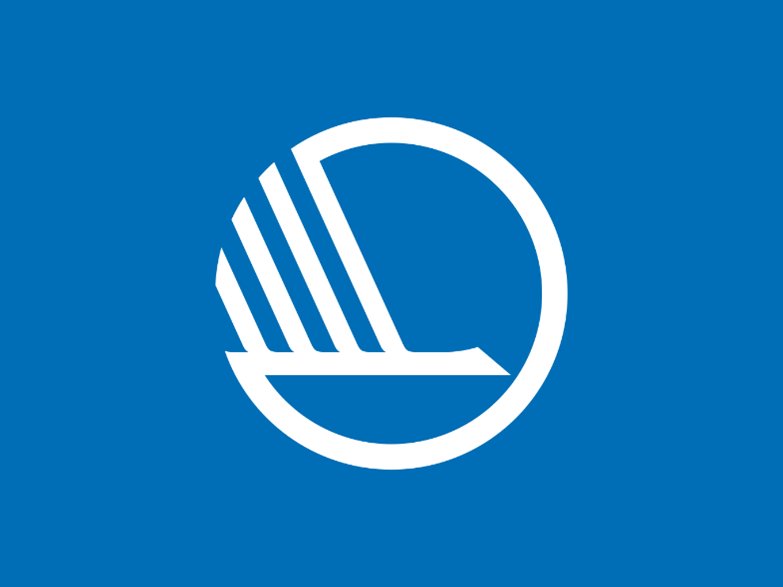
By Lasse Syversen
•
December 1, 2023
To care for your neighbors, work with your neighbors and serve your neighbors are values we have all learned from our parents and churches. Having a good relationship with our neighbors gives value to dealing with the rest of the world and helps us face the unknown.
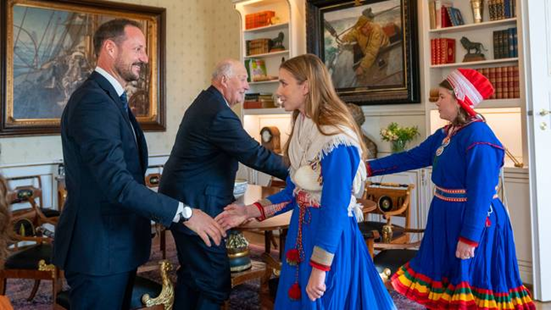
By Lasse Syversen
•
November 1, 2023
In Norway, there is an old Sami tradition of going to the King for help as a last resort when all other possibilities have been tried. In a recent interview, historian Harald Lindbach of the State Archives in Tromsø told the Norwegian Broadcast Corporation (NRK) that this goes back to the 17th and 18th centuries when individuals would make direct contact, often in connection with questions about rights to land.
This summer I have enjoyed a coolcation in Norway with Vigdis, our granddaughter Elma and our dog, Buddy…and let me just state that we were not alone. I have never seen so many foreign-registered cars, motorcycles, and even bicycles! In addition, many cruise ships travel along the coast and numerous people from other countries in Europe are traveling by train as the railroads offer hiking tickets and interrail tickets for all ages.
On Coolcation with Vigdis and Elma to the southernmost tip of Norway.
Photo: Elma
Helleren farm (Photo: Vigdis
The 3-kilometre (1.9 mile) long Jøssingfjord is narrow and deep,
and surrounded by mountains (Illustration from the museum)
Lindesnes Lighthouse at the southernmost tip of Norway (Photo: Lasse)
In early August, we took a road trip along the southern coast of Norway. We had two goals for the trip: first, we wanted to visit the southeast point in Norway with the lighthouse of Lindesnes, the oldest lighthouse in Norway; and then we wanted to investigate one of the shortest fjords in Norway, Jøssingfjord, and the newly opened science museum, VITENMUSEUM.
The first stop on our trip, the Lindesnes Lighthouse, was built in 1915. The 16.1-metre (53 ft) tall lighthouse is cast iron with a granite foundation. The lighthouse is painted white with a red top. The light sits at an elevation of 50.1 meters (164 ft.) and it emits a fixed and flashing white light that is always on, rotating between a low intensity and high intensity light every 20 seconds. The light comes from a first order Fresnel lens made in France that can be seen for up to 17.7 nautical miles (32.8 km. or 20.4 miles). The current lighthouse replaced a light station built in 1656 to mark the entrance to the Skagerak and the Baltic Sea from the North Sea. Two Lighthouse Keepers still work there -- the only ones in the country.
The Lighthouse is about ten kilometers south of the village of Hollen in Agder county, one of Norway’s richest archeological sites. Numerous Bronze and Viking Age artifacts have been found here. Lindesnes Lighthouse Museum has exhibits that teach visitors about the history, construction and cultural significance of the lighthouse which serves as the headquarters of the Museum of The Norwegian Coastal Administration. During World War II, the Lighthouse was taken over by the Germans. Being an important watchpoint, the Germans built a small fortress with four guns and, after a while, a radar antenna. The traces from World War II are still visible as trenches, tunnels and other fortifications. In the 1950s, the Lighthouse was electrified, and the fog signal was replaced with a powerful Diaphone. The fog signal was closed as a navigational aid in 1988, but it is still operational and is used on special occasions.
Driving from Lindesnes to Jøssingfjord along the North Sea Road (Route 40) is quite a scenic route that I recommend for your travel to the fjord. Our 13-year-old granddaughter may have preferred that I use the highway, but we hope she will remember to repeat this tour when she has her own family. The 3-kilometre (1.9 mile) long Jøssingfjord is narrow and deep and is surrounded by mountains. There is a road that runs along the southeast coast of the fjord, with sharp hairpin turns leading down from the mountains and some settlement on the southeastern side of the fjord.
One of the most intriguing aspects of the region's industrial history is Norway's significant contribution to "making the world white." This phrase refers to the production of titanium dioxide (TiO2), a key ingredient in white paint, coatings, plastics, cosmetics and various other products. Norway, particularly the region around Jøssingfjord, played a crucial role in the extraction and production of this mineral. I grew up almost next to the Kronos Titan plant in Fredrikstad, and it took me more than 70 years to learn the full story of how this fjord made worldwide history.
Titanium was discovered in Cornwall, Great Britain, by William Gregor in 1791 and was named by Martin Heinrich Klaproth after the Titans of Greek mythology. Titanium is a chemical element; it has the symbol Ti and atomic number 22. Found in nature only as an oxide, it can be reduced to produce a lustrous transition metal with a silver color, low density, and high strength, resistant to corrosion in sea water, aqua regia, and chlorine. The element occurs within several minerals, principally rutile and ilmenite, which are widely distributed in the Earth's crust and lithosphere; it is found in almost all living things, as well as bodies of water, rocks, and soils. The metal is extracted from its principal mineral ores by the Kroll and Hunter processes. The most common compound, titanium dioxide, is a popular photocatalyst and is used in the manufacture of white pigments. Other compounds include titanium tetrachloride (TiCl4), a component of smoke screens and catalysts; and titanium trichloride (TiCl3), which is used as a catalyst in the production of polypropylene.
Titanium dioxide is prized for its whiteness and opacity. Ilmenite, the mineral from which titanium dioxide is derived, was mined extensively in the area. The production of titanium dioxide helped Norway become a major player in the global market, providing the world with high-quality white pigments that have been used in countless products worldwide. This industry not only brought economic prosperity to the region but also left a lasting impact on global industries reliant on white pigments.
The Tellnes mine is one of Norway's largest titanium mines and, in fact, one of the largest titanium mines in Europe. The mine has reserves amounting to more than 300,000,000 tons of ore grading 18% titanium. The deposit of titanium was discovered in 1954 and production at the mine began in October 1960. Each year there is about 2,000,000 tons of ore and 1,600,000 tons of rock waste removed from the open pit mine. This resulted in about 580,000 tons of ilmenite concentrate from the mine.
Located in the mountains about four kilometers (2.5 miles) northeast of the fjord, the mine is run by a company called Titania, and the fjord is used as the shipping port for the company. Titania accounts for ten percent of the world's ilmenite production. The corporation was registered in the Kristiania (former name of Oslo) trade register on April 29, 1902. Professor Peder Farup received a patent in Norway to produce a titanium-containing dye in 1909, and together with Dr. Gustav Jebsen he developed methods for the industrial production of titanium dioxide for pigment (titanium white). In 1916, most of the shares were taken over by Titan Co. from Fredrikstad, which wanted to secure raw materials for its own production of titanium white, a completely white powder used as dye in almost everything white surrounding you -- almost everything white except food, that is. It became illegal to use it in food in the European Union in 2022.
The Helleren Power Plant is located at the head of the fjord. The electricity is generated by water from lakes located high in the mountains and the water is piped down to the sea level power plant. The force of the falling water produces electricity. Also located at the head of the fjord is the small Helleren farm which is now abandoned. It sits in a narrow valley with steep rock cliffs on two sides, a rock scree on the third side, and the fjord on the fourth side. The base of one of the rock cliffs stops about eight meters (26 ft) above the ground forming a rock shelter, or heller (hence the name of the farm). The farm is preserved and is now owned by the folk museum.
Adjacent to Jøssingfjorden, there is an exciting museum known as the Jøssingfjord Vitenmuseum (Jøssingfjord Science Museum). Situated in spectacular surroundings, the museum offers a unique experience where natural science, technology and history are combined. It focuses on the area's geology, industrial history and the technological developments that have shaped the region. Visitors can learn about the mountain formations surrounding the fjord, the industrial processes central to the area's economic development and historical events such as the Altmark Affair. Interactive exhibits and educational programs provide insights as to how nature and human activities have shaped the landscape and communities around Jøssingfjord. The museum is extremely popular among school groups but offers something for visitors of all ages.
Some of you may remember the dramatic history at Jøssingfjord during WWII known as the Altmark incident. On February 16, 1940, the German supply ship Altmark was drilled by a British navy ship. Almost three hundred British sailors were liberated from prisoner of war status by the Germans. The Altmark incident was used by the Germans as an excuse to attack Norway two months later on April 9, 1940. I might have to come back to this fascinating history later because this was not the goal for our visit; but if you would like to know more about it, there is an interesting video at The Strange Incident that Changed WW2 (youtube.com).
We enjoyed this short vacation exploring new destinations to all of us and following up from my previous article regarding numerous tourists have been attracted by the cooler temperatures in Norway than in their homelands. So many come from central Europe, probably because we have a ferry service both from Denmark and Germany making the tour more pleasant. I highly recommend these destinations for your next visit to Norway.

